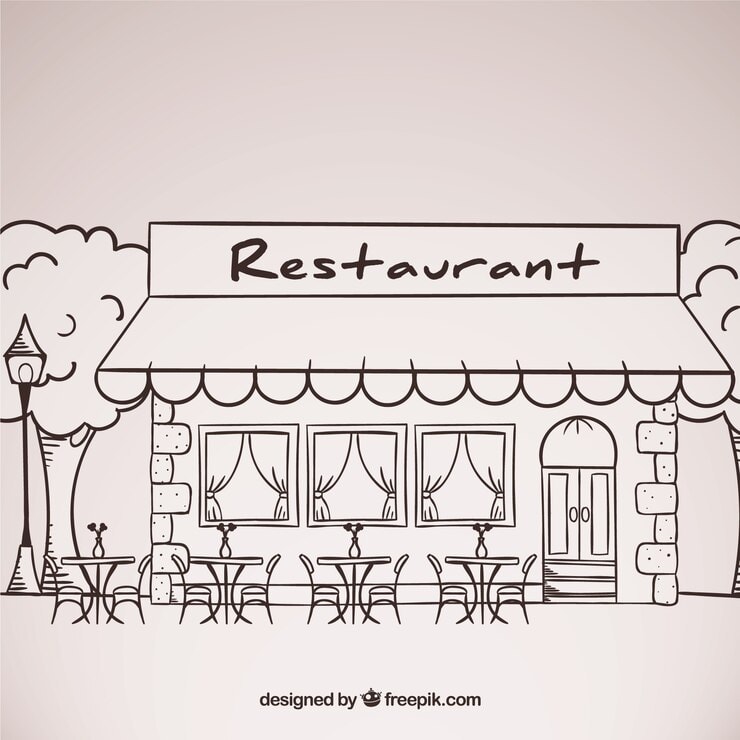In 2024, 27% of restaurant expansions failed within their first year. But here’s what you won’t hear from most consultants: success in opening a second location has nothing to do with luck. It’s about careful planning and precise execution.
Think about this: Your first location restaurant took years to perfect. Your second location needs to match that quality from day one. No pressure, right?
The good news is that you don’t have to figure this out alone. In this detailed guide, we’ll walk through every critical step of opening your second restaurant location. From market research to staff training, from budget planning to opening day strategies – we’ve covered all bases.
What makes this guide different? It’s built on real data from 500+ successful restaurant expansions in 2024. We’ll show you exactly how these businesses open the second restaurant location:
Secured optimal locations without overpaying
Built reliable teams that maintain quality across both spots
Created systems that run smoothly even when you’re not there
Avoided the cash flow traps that sink most expansion attempts
Ready to open your second restaurant location? Let’s break down the exact steps you need to take, starting with the most crucial decision: choosing your new location.

27% higher customer satisfaction
Professional delivery features:
- Real-time GPS tracking
- Automated ETA updates
- Delivery confirmation photos
- 27% higher delivery satisfaction
Step 1: Choosing the Right New Location For Restaurant Operations
Identify the best areas for your customer base.
Ensure easy access and good visibility for the second location.
Analyze costs and future growth business plans.
Step 1.1 Research the Market For A New Restaurant Location
Conduct a Demographic Analysis
You can start by defining who your customers are. It is better to get detailed data on age, income, and preferences. Use local government websites or market research firms to find this information. You should choose places where these groups are large for your second restaurant location.
Analyze Local Competition
Visit other restaurants nearby. It is best to take notes of their strengths and weaknesses. Are they busy during peak hours? This tells you about demand. Also, you should “check online reviews. This reveals customer satisfaction. Select multi-location restaurants in a spot where your concept stands out.
Step 1.2 Assess Visibility and Accessibility
Evaluate Foot Traffic and Parking
Walk around the area at different times. Count the number of passersby. Notice if they enter nearby businesses. More people mean more potential new customers. Check parking availability. Easy parking increases one location of visitor likelihood. You can take photos to help decide later.
Ensure Ease of Access from Main Roads
Think about how easy it is to reach your location. Can drivers spot your site quickly? Is it a hassle to turn it into your place? Signs should be clear from every direction. Test drive in peak hours to understand traffic flow and entry conditions.
Step 1.3 Evaluate Real Estate Options For Second Location
Compare Lease vs. Purchase
Evaluate the financial implications of leasing versus buying. Leasing often requires less upfront investment. It’s more flexible in case the location doesn’t work out. Buying means greater control over property decisions. Consult a real estate agent for an in-depth analysis.
Consider Future Development Plans in the Area
Investigate any planned developments nearby. New malls, residential areas, or schools can boost business. Visit the city planner’s office or website for future projects. Anticipate how these will add to traffic and potential new customers. Gather this info before making a final decision.
Choosing the right second location involves understanding both market needs and logistical factors. You should make sure every choice aligns with your current restaurant’s brand and budget.
Step 2: Financing Your Restaurant Expansion
Understand budget needs early.
Choose the right funding option.
Prepare for unexpected costs.
Step 2.1 Budget Planning
Planning your budget is critical. You can start by estimating your initial investment. Look at equipment, real estate, permits, and build-out costs. You shouldn’t forget operations costs, which include utilities, staff salaries, and supplies. Past expenses can give a rough idea, but factor in changes. Prices fluctuate. A coffee shop that expanded recently found construction costs had increased by 15%. Stay updated on market trends.
After estimating, create a plan for financial cushion. Unforeseen expenses happen. Allow at least 10% extra in your budget for surprise costs. This could cover anything from plumbing issues to licensing fees. Having a cushion can keep your project on track without having to cut corners.
Step 2.2 Explore Funding Options For Restaurant Business
When it comes to funding, there are multiple options. You can start by investigating small business loans. SBA loans are popular. They offer long repayment periods and reasonable rates. However, they require strong credit and can take time to process. Consider if you can wait for the process and meet the requirements.
Partnerships or investors can be other viable options. If you take this route, define the terms clearly. Decide how much control you’re willing to give up. An experienced restaurant owner once noted, “Clearly defining your restaurant expansion objectives is crucial. This includes whether you are enhancing a current location or opening a new or more than one location, as these have different financing requirements.”
A conventional bank loan is another possibility. Lines of credit might be easier with a proven revenue track, but personal guarantees may be needed. Some businesses find lines of credit useful as they only pay interest on the money used. Finally, real estate loans can help if you’re purchasing property, but these often require a detailed business plan.
When to Seek Equipment Loans
Equipment loans are perfect for upgrading without large initial costs. They don’t usually require additional collateral since the equipment acts as the security. If expanding means purchasing a new oven or fridge, an equipment loan is worth exploring. This way you can spread the cost of necessary items over time.
In essence, choosing the right financing is about aligning your needs with what different financial options offer. Stay informed about each type’s pros and cons and align them with your goals. Establish a clear understanding of your current financial situation and growth targets. This ensures that the expansion does not just happen but succeeds properly.
Step 3: Managing Staffing for Multiple Locations
Save time by streamlining recruitment with efficient strategies.
Transferable skills in staff can boost operational efficiency.
Mentorship ensures consistent service quality across multiple locations.
Step 3.1 Recruitment Strategies For First Location and Second Location
Designing effective recruitment processes is crucial for expanding your restaurant to multiple locations. It ensures you get to hire the right talent and maintain consistency across outlets.
Design Interviews for Specific Roles
Identify Key Roles: List down the roles required at each location. This includes chefs, servers, and managerial positions. Each role requires specific skills and responsibilities.
Create Role-Specific Questions: Develop interview questions that focus on the unique skills needed for each job. For example, a chef might need questions that assess culinary skills and kitchen management, while a server might need questions about customer service and multitasking abilities.
Panel Interviews: Consider using panel interviews for managerial roles. Having multiple interviewers can provide diverse perspectives on a candidate’s fit for the role.
Behavioral Interviews: Use behavioral interview techniques to assess how candidates have handled situations in past jobs. This approach lets you see how they’ll fit into your restaurant’s culture and processes.
Situational Questions: Ask situational questions that require candidates to think on their feet. This can help assess problem-solving abilities, especially under pressure.
Identify Transferable Skills in Existing Staff
Evaluate Current Staff Skills: Assess your current team’s abilities. Highlight those with skills that can be transferred to new locations. Communication, adaptability, and leadership are vital in a multi-location business.
Leverage Internal Talent: Promote staff internally who have shown expertise and potential. This not only motivates your team but also ensures that your restaurant’s values and processes are upheld across locations.
Training for New Roles: Provide opportunities for staff to learn new skills that are necessary for roles in the second location. This might involve cross-training them in various areas of the restaurant.
Use Transferable Skills: Emphasize skills that apply to any setting, such as teamwork and problem-solving. Transferable skills demonstrate adaptability and the ability to work effectively in teams.
Step 3.2 Training Programs
Training programs are pivotal in maintaining service standards and operational know-how. They create consistency across all locations and prepare new employees and staff for challenges.
Implement Consistent Training Modules
Standardize Training Content: Develop training materials that cover essential operations, customer service standards, and health and safety protocols. Ensure that these are uniform across all locations to maintain consistency.
Deliver Training In-Person and Online: Depending on the content, use both classroom sessions for practical skills and online platforms for theoretical knowledge. Online modules allow flexibility for staff.
Evaluate and Update Regularly: Training programs should evolve. Regularly review and update them to reflect changes in the industry or your restaurant’s processes.
Feedback Mechanism: Implement a system for staff to give feedback on training sessions. This helps to adjust and improve training content, making it more effective.
Use Mentorship from Experienced Staff
Assign Mentors: Pair less experienced staff with veteran employees who can guide them through their roles. Mentors can provide on-the-job training and share best practices.
Set Clear Goals: Define clear objectives for the mentorship program. This might include improving specific skills, increasing customer satisfaction, or preparing for leadership roles.
Regular Check-ins: Schedule regular meetings between mentors and mentees. This ensures that mentees are progressing and learning. It also provides an opportunity to address any challenges.
Track Progress: Keep a record of mentees’ development. This helps in assessing the effectiveness of the mentoring and allows adjustments if needed.
Managing staffing across multiple restaurant locations is a comprehensive task. By implementing focused recruitment strategies and thorough training programs, you’ll build a reliable team capable of handling the dynamics of operating a growing business.
Step 4: Marketing Strategies for New Restaurant Openings
Attract more customers with social media and influencers.
See sales growth with effective promotions and discounts.
Make your restaurant the talk of the town before and after opening day.
Step 4.1 Pre-Opening Hype
Utilize Social Media Teasers
You should create excitement before your restaurant opens through social media. Show snippets of your second location. Post pictures of the food, decor, and even behind-the-scenes preparations. People love to see what they will experience. Consider running a series on Instagram or TikTok with weekly updates. Engage users by asking them to guess opening day specials or vote on menu items.
For effectiveness, be consistent. Post regularly and respond quickly to comments. This interaction builds a relationship with potential customers. Encourage your current followers to share posts to engage a larger audience.
Host a Soft Launch
A soft launch helps adjust operations before the grand opening. You can invite a small group of people for a preview, perhaps friends, family, and local bloggers. This is an excellent opportunity to gather feedback. You can tweak any part of the service or menu items based on their responses.
It is best to use the soft launch as a platform to collect content. Ask attendees to take photos and share their experiences online. This user-generated content serves as trusted recommendations to others.
Step 4.2 Opening Day Promotions
Offer Exclusive Discounts
Plan special discounts for the opening day. It’s a proven way to get foot traffic. For example, offer a 20% discount on all meals over the first weekend. People love deals. More than 80% of diners are more likely to try a restaurant if a deal is available.
Include limited-time offers to create urgency. Flash deals during specific hours can help fill online orders during off-peak times. Ensure to promote these deals across all your channels ahead of time.
Create Buzz with Local Influencers
Team up with local influencers to spread the word about your restaurant. Influencers can reach large and engaged audiences that trust their suggestions.
You can choose influencers whose values align with your restaurant’s brand. If you serve organic food, partner with health-conscious influencers. This ensures their followers align with your target audience. Offer the influencers exclusive previews or tasting sessions. You can ask them to document and share their genuine experiences with their audience.
Advanced Tips for Restaurant Expansion
Introduce automation technologies to improve efficiency.
Prevent overexpansion by managing cash well.
Understand common mistakes and how to avoid them.
Streamlining Operations
Automation can be a game changer in your restaurant’s expansion. The global food automation market is growing rapidly, with a CAGR of 6.7% through 2030. Technologies like AI-enhanced menus and robotic servers can make a big difference. You can start by analyzing which operations take the most time and effort. Tasks like order-taking, inventory management, and customer service could benefit from tech integration. Also, focus on maintaining quality standards. New locations must deliver the same experience as the original. Create clear operational guidelines and train your team thoroughly. Follow-up to ensure these standards are being met.
Common Pitfalls and How to Avoid Them
Avoiding Overexpansion
Expanding too quickly can lead to issues. Overexpansion spreads resources thin, impacting quality. To avoid this, analyze all your locations’ current resources and capabilities. Look for stable cash flow and market demand before opening a second location. It’s crucial to plan a timeline that allows adjustments without financial strain. Staying informed about industry performance helps too. Black Box Intelligence suggests traffic losses ranging from -3.4% to -2.4% in 2025. Monitoring such trends can provide valuable insights for pacing your expansion.
Managing Cash Flow Effectively
Strong financial planning is key. Track every expense meticulously, from staffing to marketing. Ensure you have a financial cushion for unexpected costs. Using accounting software can aid in tracking cash flow efficiently. Aligning financial management with business goals prevents overspending.
Balancing Automation and Human Touch
Automation enhances efficiency but doesn’t eliminate human interaction. Focus on hybrid approaches that blend technology with warm customer service. This approach maintains your brand’s personal touch. Technologies like AI-powered voice assistants can work alongside staff to deliver a seamless experience. You should make sure that automation tools are user-friendly, for both staff and patrons.
Research current trends and continuously educate your team about innovations. Encourage feedback from managers and staff at each location. This can lead to practical adjustments and better integration of new technologies. This step not only improves customer service and keeps the experience personal but also increases employee satisfaction by reducing overwhelm due to process overloading.
Leveraging Data for Strategic Decisions
Data-driven decision-making can set successful expansions apart. It is best to use analytics to understand customer behavior, employee performance, and inventory needs. Identify what works and build on those foundations. Platforms that compile real-time analytics about sales, traffic, and satisfaction can offer immediate feedback. This helps in making informed decisions about marketing strategies and operational changes.
Avoid relying solely on one set of data—combine customer feedback, sales data, and market research. This holistic approach ensures your business is agile and responsive. Collaboration with analytics experts can further strengthen your understanding and application of the data for long-term planning.
Second Restaurant Location Successfully

Opening a second restaurant location is a significant step in your business growth. With careful planning and execution, you can turn this expansion into a success story. The key is to approach each aspect – from second location selection to staff training – with attention to detail and strategic thinking.
Your first restaurant’s success gives you valuable experience. You can use that knowledge, combined with thorough market research and financial planning, to make informed decisions. Remember that timing is crucial. You can start your expansion only when your first location runs smoothly and shows consistent profits.
The path from brand recognition to expansion requires patience. You should take time to build strong teams, establish clear communication systems, and maintain quality standards across locations. Your brand reputation depends on delivering the same excellent experience at both restaurants. One crucial aspect of managing a successful restaurant expansion is keeping an eye on your expenses, particularly your food costs. An optimized food cost percentage can contribute significantly to higher profits and sustained growth. For insights on how to effectively manage this essential component, check out this article on optimizing your restaurant’s food cost percentage.
Stay focused on what made your first location successful. Keep those core values and practices while adapting to your new location’s unique characteristics. With proper planning, solid finances, and dedicated staff, your second restaurant location can become as successful as your first.
The restaurant industry rewards those who plan carefully and execute consistently. Your expansion journey starts with the first step of the training process: putting these insights into action. To further enhance your growth strategy, consider implementing smart multi-unit restaurant approaches. These strategies can help streamline operations and ensure that each location thrives while maintaining the brand’s integrity. For more insights on managing growth effectively, check out this article on multi-unit restaurant strategies.



























